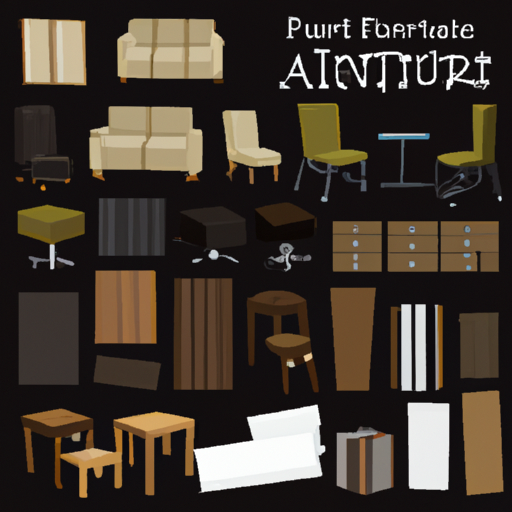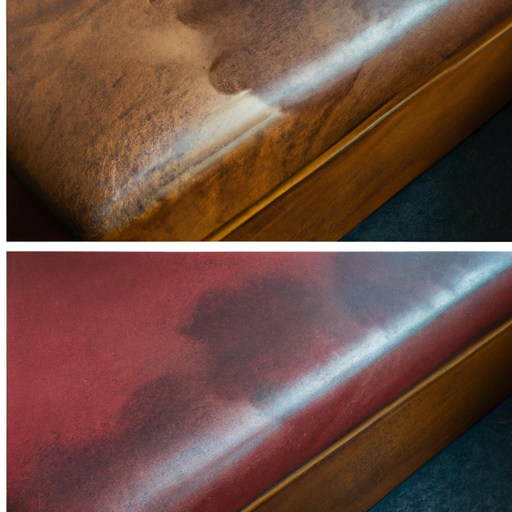In this comprehensive guide, we delve into the world of cleaning products specifically designed for furniture. We discuss the importance of choosing the right cleaning products, the potential damage caused by incorrect products, and the variety of options available in the market. The guide also provides valuable advice on how to match the cleaning product with the type of furniture material.
Understanding Your Furniture’s Material: What are you really sitting on?
When it comes to choosing the right cleaning products for your furniture, it is essential to understand the material it is made of. Different materials require different cleaning methods and products to ensure their longevity and maintain their appearance. Here are three key subheadings to help you navigate the world of furniture materials:
- 1. Fabric Upholstery:
Many sofas, chairs, and cushions are covered in fabric upholstery. It is crucial to identify whether your fabric is natural or synthetic. Natural fabrics like cotton, linen, and silk may require gentler cleaning products to avoid damage, while synthetic fabrics like polyester and microfiber can typically withstand more robust cleaning solutions. Checking the manufacturer’s instructions or consulting with a professional can help you determine the appropriate cleaning products for your fabric upholstery. - 2. Leather:
Leather furniture adds a touch of elegance to any space, but it also requires specialized care. Different types of leather, such as aniline, semi-aniline, and pigmented leather, have distinct characteristics and cleaning requirements. Using the wrong cleaning products can cause discoloration, fading, or even cracking. It is crucial to choose cleaning products specifically designed for leather and to follow the manufacturer’s recommendations to ensure the longevity of your leather furniture. - 3. Wood:
Wooden furniture is timeless and durable, but it also requires regular maintenance to preserve its beauty. The type of wood and its finish will determine the appropriate cleaning products. For example, untreated or oiled wood may require a more delicate approach, while varnished or lacquered wood can often handle stronger cleaning solutions. It is important to avoid abrasive cleaners that can scratch the wood’s surface and to use products that nourish and protect the wood, such as specialized wood cleaners or oils.
An illustration of various furniture materials like wood, leather, and fabric.
Navigating the Cleaning Products Aisle: ‘So many products, so little time!’, isn’t it?
Walking down the cleaning products aisle can be overwhelming. There are countless options to choose from, each promising to be the best solution for your furniture cleaning needs. So, how do you navigate through the sea of products and select the right ones? Here are a few tips to help you make the best choices:
- 1. Read the Labels:
Take the time to read the labels and product descriptions carefully. Look for cleaning products that are specifically formulated for the type of furniture material you have. Pay attention to any warnings or cautions, as some products may be too harsh for certain materials. - 2. Research and Reviews:
Before heading to the store, do some research online or ask for recommendations from friends or family. Read reviews and testimonials from others who have used the products you are considering. This can give you valuable insights into their effectiveness and any potential issues to watch out for. - 3. Consider Eco-Friendly Options:
If you are concerned about the environmental impact of cleaning products, look for eco-friendly or green alternatives. These products are often made with natural ingredients and are safer for both your furniture and the planet. - 4. Seek Professional Advice:
If you are unsure about which products to choose, don’t hesitate to seek advice from professionals. Furniture manufacturers, upholstery specialists, or even knowledgeable store associates can provide valuable guidance based on their expertise and experience.
The Potential Damage of Incorrect Cleaning Products: Ever wondered, ‘What’s the worst that could happen?’
Using incorrect cleaning products on your furniture can lead to a range of potential damages. The wrong chemicals can cause discoloration, fading, or even permanent stains on your upholstery. Harsh cleaners can strip away the protective coatings on your furniture, leaving it vulnerable to wear and tear.
Additionally, some cleaning products may leave behind residue that attracts dirt and grime, making your furniture appear dirtier than before. Certain chemicals can also weaken the fibers of your upholstery, causing it to become brittle and prone to tearing.
In some cases, using the wrong cleaning products can even void the warranty on your furniture. Manufacturers often specify the types of cleaning products that are safe to use, and using anything outside of those recommendations can result in a loss of coverage.
Furthermore, some cleaning products contain strong odors or chemicals that can irritate allergies or sensitive individuals. This can lead to discomfort or health issues for you or your family members.
A side by side photo comparison showing the damage caused by incorrect cleaning products on a piece of furniture.
The Art of Matching Cleaning Products with Furniture Materials: ‘The right tools for the right job’
When it comes to cleaning your furniture, it’s essential to understand that different materials require different cleaning products. Using the wrong product can result in damage or ineffective cleaning.
Firstly, for leather furniture, always opt for a cleaner specifically designed for leather. Leather cleaners are pH-balanced and gentle, helping to preserve the natural oils and prevent drying out. Avoid using harsh chemicals or abrasive scrubbing tools that can cause scratches or discoloration.
For fabric upholstery, check the cleaning code on the furniture tag. W or WS coded fabrics can typically be cleaned with water-based solutions. However, S or X coded fabrics may require professional cleaning or special solvent-based cleaners. It’s important to follow these guidelines to avoid damaging the fabric or causing color bleeding.
Wood furniture requires a different approach altogether. For regular cleaning, a mild soap and water solution is usually sufficient. Avoid using excessive water or harsh cleaners that can penetrate the wood and cause swelling or warping. Additionally, consider using furniture polish or wax to maintain the natural shine and protect the wood’s surface.
Remember, when it comes to cleaning products, it’s not just about the material but also about the specific needs of your furniture. Whether it’s removing stains, eliminating odors, or protecting against future damage, choose products that are designed to address those concerns.
Cleaning Products For Furniture:
| Material | Cleaning Product | Potential Damage | Additional Tips |
|---|---|---|---|
| Wood | Dish Soap & Water | Can damage finish | Use no more than a few drops of dish soap in a bucket of water |
| Leather | Leather Cleaner | Can cause discoloration | Test a small area first |
| Fabric | Vinegar & Water Solution | Can cause fading | Create a 50/50 solution and spot test |
| Vinyl | Vinegar & Water Solution | Can cause discoloration | Create a 50/50 solution and spot test |
Choosing the right cleaning products for your furniture not only ensures the longevity of your pieces but also maintains their aesthetic appeal. Remember, the key to effective cleaning lies in understanding the material and picking products that are designed to clean without causing harm. With the right knowledge and tools, you can keep your furniture looking as good as new for years to come.


